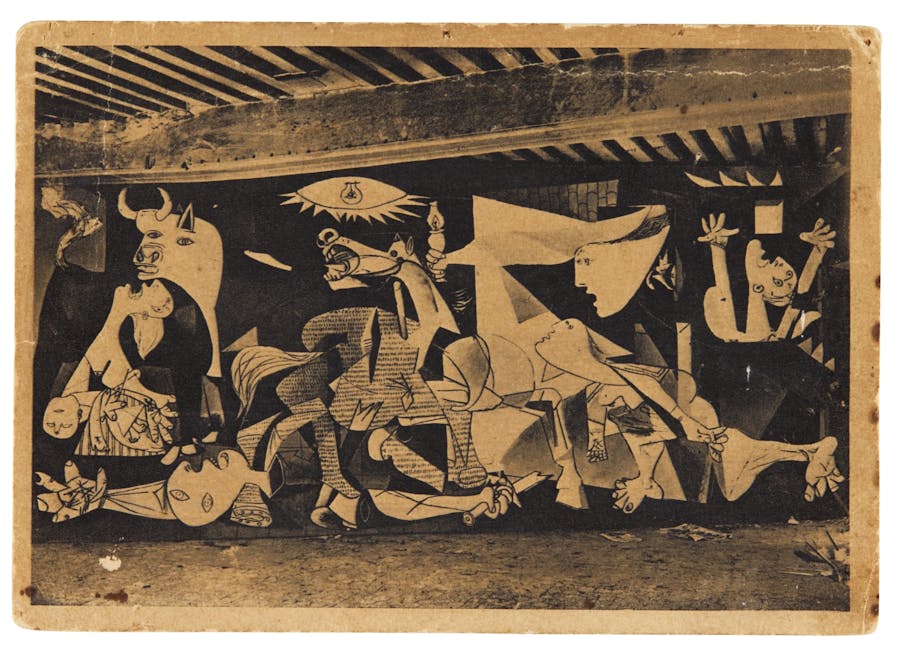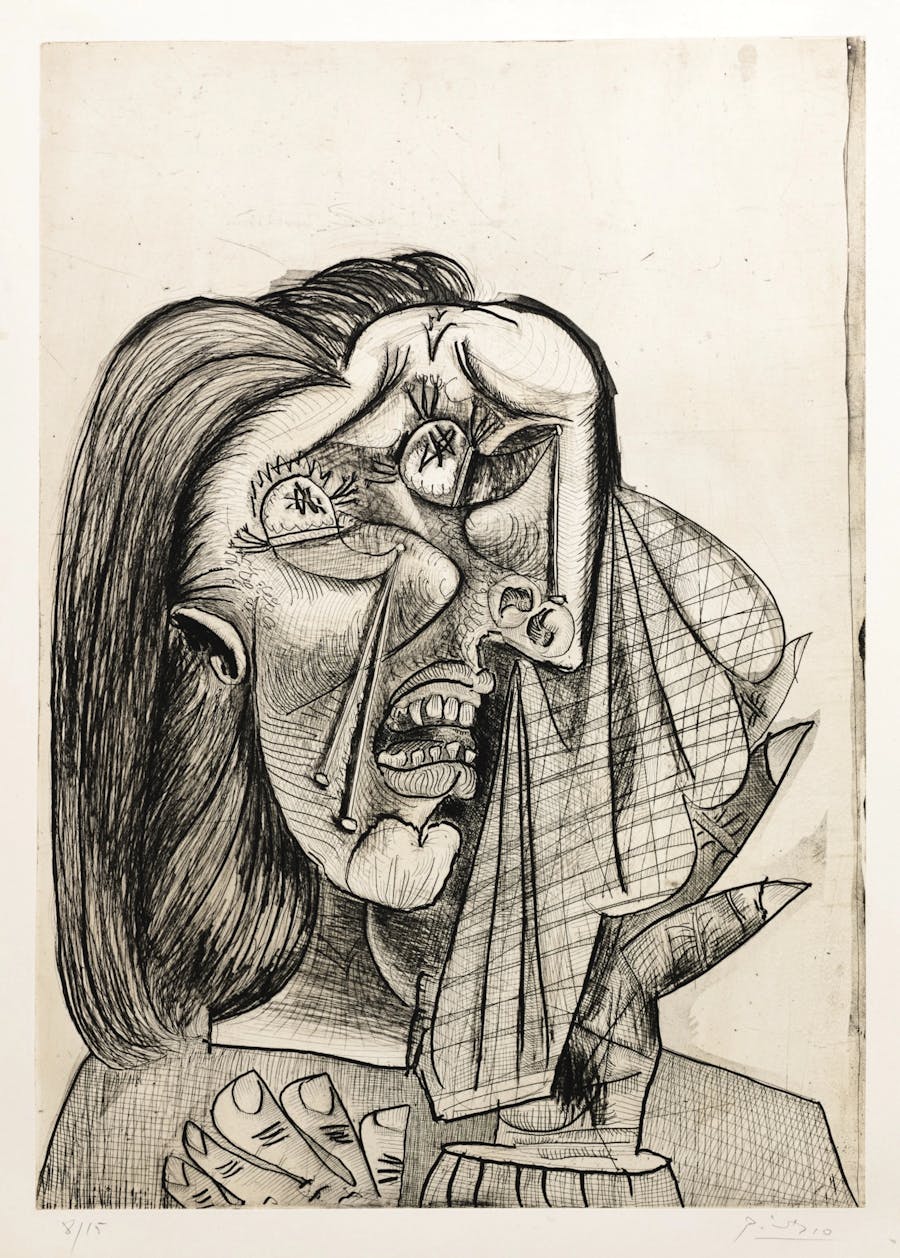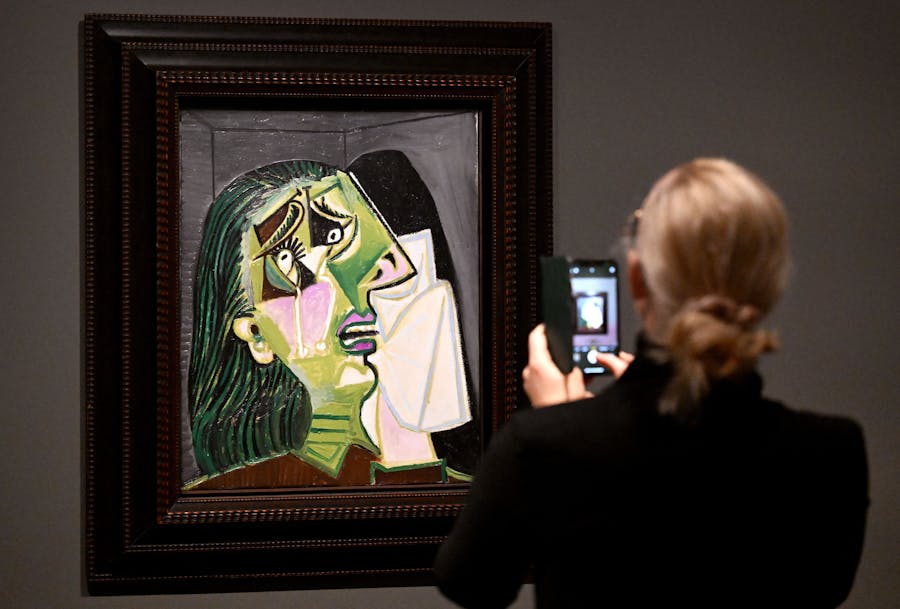The Horrors Behind Picasso's Weeping Woman
In 1937, Picasso created Guernica, which would become one of the most recognizable and politically charged works of 20th century art. From this piece, Picasso started the series of the Weeping Woman, just as powerful in their own right.
In July 1936, the Spanish Civil War broke out when General Franco revolted against the Republican government which had replaced the Spanish monarchy in 1931. During this time Pablo Picasso, a Republican, was in Paris and kept up with developments through newspapers and letters sent to him from his mother in Barcelona. In 1937, the Basque town of Guernica was bombed by the German air force under Hitler's orders on behalf of Franco.
Related: Picasso: The Universal Artist
When Picasso was commissioned by the Spanish Republican government to create a mural for the Paris Exhibition in 1937, Picasso wanted to put on canvas the atrocities of the attack on Guernica. Picasso's Guernica shows a scene of massacre and suffering, with women and children portrayed as the majority of the victims.

For months afterwards, most likely haunted by both the attack, Picasso made a series based on one of the figures in the mural that was later removed: a weeping woman holding her dead child. The series of portrayals of women in tears was a lament to those devastated by the bombing. After completing Guernica, Picasso worked obsessively on his portraits of crying women in both drawing and oil painting, a series he called La femme qui pleuree (The Weeping Woman).
Related: On and Off the Canvas: Art's Most Famous Muses
The female subject of the weeping woman was Picasso's mistress and muse Dora Maar, with whom he was in a relationship from 1935 to 1943. Their tumultuous affair was marked by abuse, sorrow and obsession, which brought a personal aspect to Picasso's portraits.

"The one motif he could not relinquish was that of the weeping woman," said Judi Freeman, author of Picasso and the Weeping Women: The Years of Marie-Therese Walter and Dora Maar. "Her visage haunted him. He drew her frequently, almost obsessively, for the next several months. She was the metaphor for his private agonies."
Want more articles like this straight to your inbox? Subscribe to our free newsletter!
The sharp angles of the face, the anguish in her eyes and the desperation in the shape of her mouth, painted in the bold colors that make up her complexion, Picasso's Weeping Woman immediately creates an uncomfortable feeling in the viewer. As an abstract portrait, the feeling of sadness and terror is as tangible as any work of realism.

Related: 10 Major Art Thefts
The four Weeping Woman oil paintings that exist today are all in museum collections, held at the Tate (London), National Gallery of Victoria (Melbourne), LACMA (Los Angeles) and Musee Picasso (Paris). The National Gallery of Victoria version was purchased for A$1.6 million in 1986, which caused outrage at the time because of the high price tag for a non-Australian work of art. That same year in August it was stolen from the museum with the thieves leaving a ransom note asking for more funds to purchase Australian art. The work was found at a railway locker in Melbourne later that month, but no suspects were ever identified or arrested. Today that painting is said to be worth about $100 million.
The horrible power of Picasso's Weeping Woman works continue to endure today as a legacy of both Guernica and his own turbulent personal life, with lithographs, drawings and prints of the motif often coming to auction.


